Apr 11, 2025
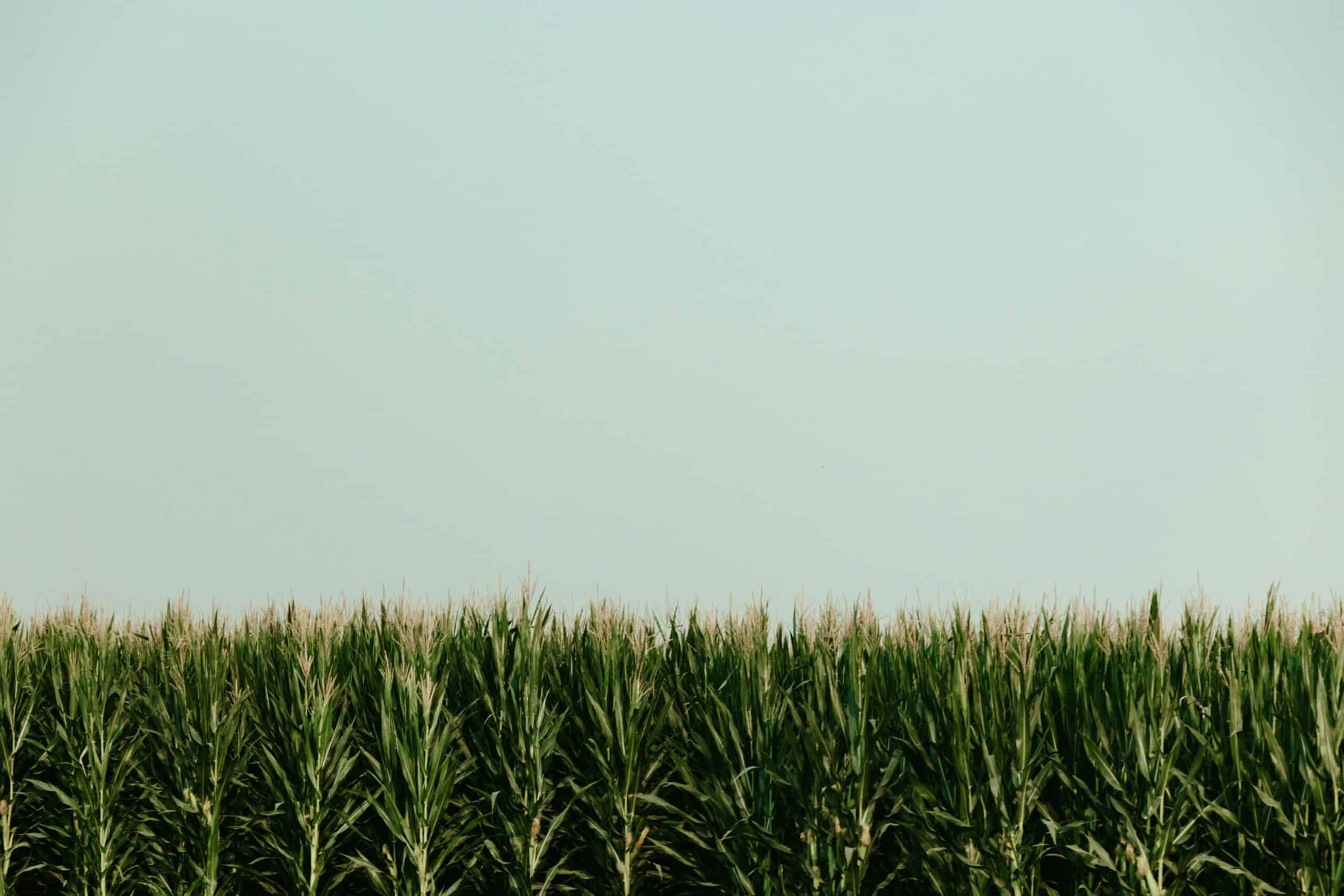
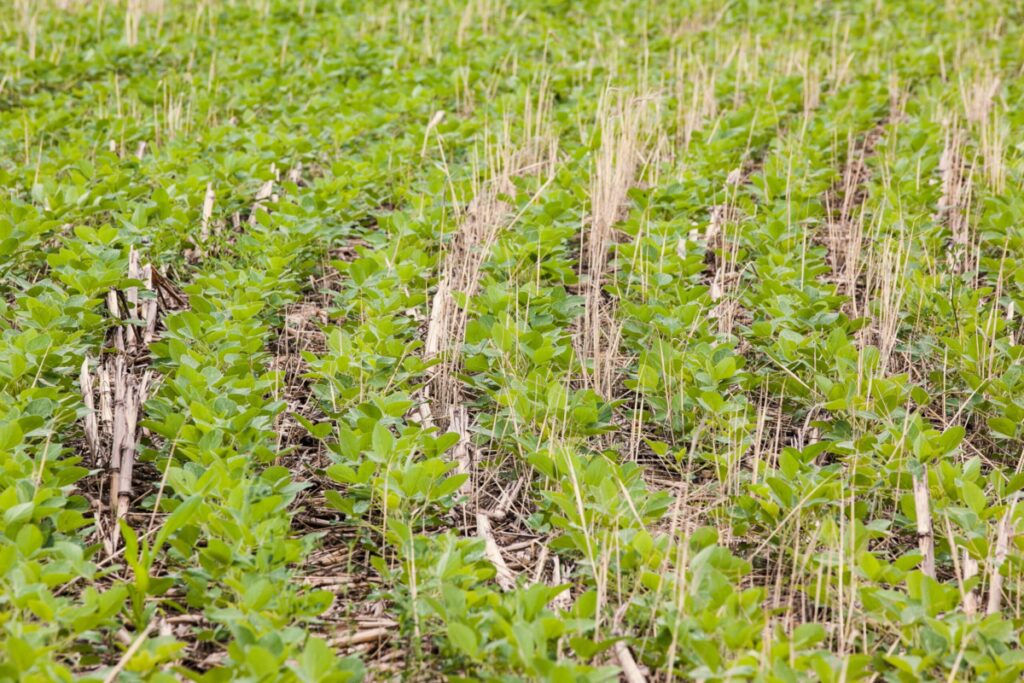
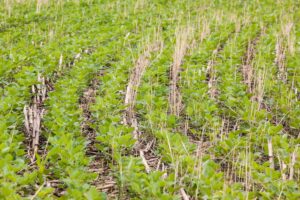
Sustainable agriculture research shows that the benefits of cover crops are broad and diverse. A cover crop or plant mixture can positively impact a grower’s farm – from funding to soil. Despite the different studies conducted in recent years, farmer interest isn’t as high as it could be. This is likely because cover crops are an upfront investment with a long-term return.
For those who take the chance and implement a cover cropping system, the returns often far outweigh the risk and initial investment. Here are the physical, chemical, biological, and economic benefits of planting cover crops in your fields.
Cover crops are plants grown to benefit the soil and boost the successful growth of future crops. These plants are one piece of the regenerative agriculture puzzle, which enhances soil health and structure. They also contribute to the cycle of nutrients and promote biodiversity.
While most of these plants are sown as winter cover crops in the fall, post-harvest, timing can be flexible and seeds are sown throughout the year into plant-free soil.
The cover crop category includes small grains, legumes, grasses, or a mixture to suit the specific needs of the soil and cash crops. They’re broadly categorized into two groups – those that fix nitrogen and those that don’t.
These cover crops create a healthier and more productive soil environment for cash crops to flourish.
While not directly harvested, cover crops deliver a wide range of benefits for agriculture productivity and sustainability. Many are grown for a specific benefit but provide many advantages – contributing to a more productive and sustainable agriculture system.
Soil is susceptible to erosion throughout the winter and during heavy spring rains. Cover crops shield the soil from harsh weather conditions, keeping it in place.
Cover crops enhance soil fertility and biological activity essential for a productive agriculture ecosystem and industry. As plants decompose, they add organic matter to the soil through their root mass, enriching the soil and supporting the long-term productivity of your fields.
Cover crops can reduce the weeds in your field. They stifle weed growth by competing for essential resources like water and nutrients. They inhibit lower-level weed growth by blocking sunlight. Certain crops also produce root exudates with natural herbicide effects, providing an additional line of defense against weeds before emergence.
Cover crops host beneficial microbes that ward off disease-causing organisms, creating a protective shield for future crops. Some produce compounds that curtail the nematode population while promoting the presence of beneficial nematodes, fostering a balanced soil ecosystem.
Cover crops can also act as an alternative revenue stream through foraging and grazing opportunities. These crops can be a nutritious feed source during off-season or dry periods.
By providing a continuous food source for soil organisms, cover crops support the proliferation of beneficial bacteria, fungi, and other microscopic organisms. This improved biological activity results in better nutrient cycling improves soil structure, and creates an inhospitable environment for pests.
These high-level benefits also lead to improved crop yields and climate benefits.
Note: The benefits of cover crops can vary based on factors like location, season, sowing timing, genetics, and crop rotation.
Adding cover crops to your farming practices enhances yield potential and leads to increased stability, profitability, and new income sources. Here’s how to think about how cover crops can support the finances on your farm.
There are many ways cover crops can provide farmers with greater crop production stability and profitability on the farm.
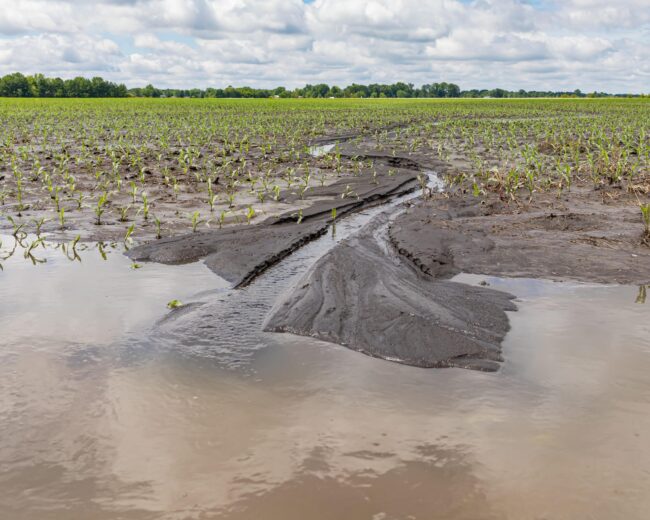
Cover crops greatly benefit the environment as a regenerative agriculture best practice.
Starting with your soil and water, a cover crop increases the organic matter in the soil, enhancing fertility and improving structure. Your soil will have better water infiltration and holding capacity, improving water productivity and mitigating drought impacts. The use of cover crops has also been found to protect water quality.
Plus, by trapping excess nitrogen, cover crops stop nitrogen from leaching into groundwater or surface water bodies.
Beyond leaching, cover crops also help prevent erosion. They create a protective layer over the soil by binding aggregates together with their roots. This shields soil from rain impact and can reduce the speed of surface runoff – resulting in less soil loss.
The excess ground cover enhances local biodiversity, serving as a habitat and food source for a variety of organisms, including vital pollinators.
In the larger picture of climate change, cover crops are an efficient solution for carbon sequestration. They absorb atmospheric carbon dioxide, storing it in their extensive root systems for long periods of time.
Cover crops reduce compaction, add organic matter to feed beneficial bacteria, and foster a healthier soil environment.
The crops shield the soil and reduce wind and water erosion. Growing crops during the off-season can slow the wind speed at the ground level, decreasing wind erosion. Plus, the leaves of the plant protect soil from topsoil water erosion. This helps your soil avoid the loss of essential organic matter and nutrients.
Soil aggregates also contribute to increased soil organic matter, improved water and nutrient-holding capacities, and enhanced soil aeration. They also reduce surface crusting and soil compaction.
Biologically, cover crops boost soil microbial biomass and enzymatic activity. The more diverse and active your microbiome, the more beneficial your soil will be to cash crops. A cover crop rotation can improve microbe diversity and activity, enhancing soil health and fertility.
A cover crop’s contribution to soil compaction relief, erosion control, and nutrient cycling makes them an integral part of maintaining soil health.
Cover crops can potentially have a positive or negative effect when it comes to pests.
Ryegrass and cereal rye, for instance, have been found to reduce the populations of soybean cyst nematodes. Brassica crops like radishes and mustards can help reduce nematode pressure in the soil by releasing a soil fumigation compound.
Yet, some farmers have found that certain crops can increase the presence of certain pests. Work with a trusted adviser to ensure you’re planting the cover crop that is the best fit for your crop rotation.
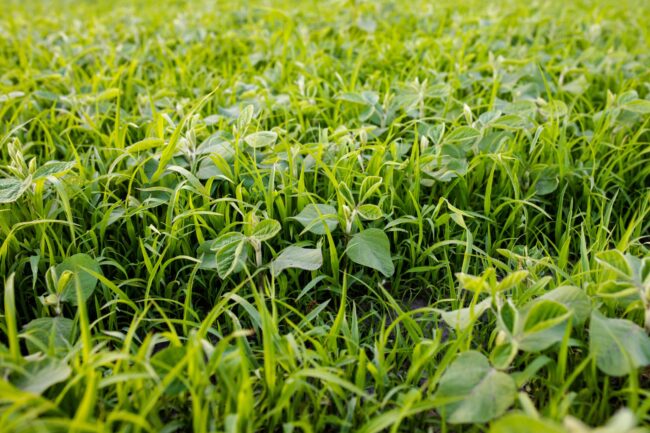
Cover crops fall into two categories: nitrogen-fixing (legumes) and non-nitrogen-fixing (non-legumes, like grains and grasses).
Both types can help prevent soil erosion or compaction, add organic matter to the soil, and suppress weeds. Yet, each group offers unique benefits to improve soil health and agricultural productivity.
Non-legumes don’t fix nitrogen but do provide other benefits. They add a substantial amount of carbon to the soil due to their higher carbon-to-nitrogen ratio (C:N). Their slower decomposition also releases nutrients more gradually into the soil, resulting in a steady nutrient supply for your cash crops.
Annual ryegrass can be used in many ways. You can plant it for erosion control and nitrate leaching management. Or, in colder climates, you can plant it as winterkill to smother weeds in the spring.
You can also overseed annual ryegrass with corn, soybeans, and other cash crops.
Soil Types | Prefers: fertile, well-drained loam or sandy loam soils Tolerates: rocky or clay soils |
Root System | Dense and fibrous, yet shallow |
Cost | Affordable |
Benefits | - Prevents erosion - Improves soil structure and drainage - Adds organic matter - Suppresses weeds - Scavenges nutrients - Establishes quickly even in poor, rocky, or wet soil - Tolerates some flooding when established - Improves early-season weed control - Stabilizes wet roads, areas, or borders - Reduces soybean cyst nematodes |
Mix with | - Legumes - Grasses |
Considerations | - Can create weed problem, especially for oat wheat, given herbicide resistance - Avoid overgrazing or mowing ryegrass closer than 3-4 inches - Water and nitrogen-loving crop - Not especially cold hardy |
Timing | - Zone 6: Fall - Zone 5 and colder: 40 days before first frost |
More tolerant than other small grains, barley is ideal for damaging or struggling fields. Whether your acres are overworked, covered in weeds, or eroding, barley can provide adequate support for your soil, cash crops, and companion legumes.
Soil Types | Prefers: well-drained, fertile loams or light clay soils with cool, dry winters Avoid: waterlogged soil |
Root System | Fibrous |
Cost | Relatively affordable |
Benefits | - Prevents erosion - Outcompetes weeds for resources - Shades out weeds - Releases allelopathic chemicals to suppress weeds - Scavenges excess nutrients - Adds organic matter - Reclaims damaged or struggling fields - Improves structure and water infiltration - Provides an ideal upright posture to be a nurse crop |
Mix with | - Annual legumes - Ryegrass - Other small grains |
Considerations | Tolerates alkaline soil better than any other cereal |
Timing | Zone 8 and warmer: September - February |
Ideal for any grower struggling with worn-out soil, sorghum-sudangrass is great for over-farmed or compacted fields. The five to twelve feet of plant with an aggressive root system leaves around 4,000 – 5,000 lb DM/A.
Soil Types | Prefers: good fertility and near-neutral pH. Tolerates: low-fertility, moderate acidity, and high alkalinity. |
Root System | Fibrous. When mowed at 3 to 4 feet, root mass can increase five to eight times compared to unmown stocks. |
Cost | Modest |
Benefits | - Builds organic matter in soil - Smothers weeds - Disrupts life cycles of diseases, nematodes, and pests when used instead of a cash-crop - Loosens subsoil and breaks up compaction - Tolerates drought - Provides a habitat for beneficial insects - Forage opportunity (see considerations) |
Mix with | - Buckwheat - Sesbania - Sunn hemp - Forage soybeans - Cowpeas |
Considerations | - Cross between sorghum and sudangrass - Can produce prussic acid poisoning in livestock when plants are young, drought stressed, or killed by frost - Due to large size, the post-harvest residue can interfere with planting in the spring - Produces more organic matter per acre at a lower seed cost than any other cover crop |
Timing | - Depends. Work with a crop adviser in your area to determine best planting time based on desired outcomes. - Not drought-tolerant |
If you need a companion or nurse crop for your legumes, oats are a great option. Oats scavenge nutrients, add biomass, and can be used as a natural trellis or winterkill mulch.
Soil Types | Prefers: Medium-textured soil |
Root System | Fibrous |
Cost | Affordable |
Benefits | - Suppresses weeds and nematodes - Prevents erosion - Scavenges excess nutrients - Adds biomass - Acts as a nurse crop, green manure, or companion crop - Improves productivity of legumes - Serves as a feed supplement and grazing opportunity |
Mix with | - Clover - Peas - Vetches - Legumes - Other small grains |
Considerations | - Prefers cool, moist conditions and well-drained soil - Will not flourish in hot, dry weather - Can pose a nitrate-poisoning threat to livestock - Easy to kill - Less prone to insect issues than wheat or barley |
Timing | - Winterkill cover: seed in late summer or early fall in Zone 7 or colder - Sow 40-60 days before first frost for winterkill mulch |
Rye comes to maturity quicker than other cereal grains, which can help conserve water in your fields in the spring for your cash crops. Given rye’s tendency to tie up soil Nitrogen, consider pairing it with a legume-like hairy vetch.
Soil Types | Prefers: light loams, sandy soils Tolerates: dry soil |
Root System | Quick growing, fibrous |
Cost | Affordable |
Benefits | - Scavenges excess nitrogen - Prevents erosion - Adds organic matter - Suppresses weeds like lambsquarters, redroot pigweed, velvetleaf, chickweed, and foxtail - Cold- and drought-tolerant |
Mix with | - Legumes - Grasses - Other cereal grains |
Considerations | - Out performs all other cover crops in infertile, sandy, or acidic soil - Can tie up spring nitrogen – pair with a winter annual legume - Can be seeded later than any other cereal - Root system promotes better drainage - Kill rye before maturing - Can slow soil warming further in poorly draining soils |
Timing | - Zone 3-7: seed from late summer to mid-fall - Zone 8 and warmer: seed from fall to mid-winter |
Ideal for breaking up soil compaction with their tuber roots, these fast-growing cover crops also provide plenty of ground cover shade. This prevents weed growth while improving drainage throughout your field.
Soil Types | Prefers: Deep sandy to loamy soils |
Root System | Varies (see considerations) |
Cost | Affordable |
Benefits | - Excellent nutrient scavenging - Protects against soil erosion - Manages nematodes, weeds, and diseases through a chemical compound in decomposing residue - Prevents erosion - Alleviates soil compaction |
Mix with | - Other brassicas or mustards - Small grains - Crimson clover |
Considerations | - Decomposes quickly with winterkill, leaving an easy-to-manage seedbed. - Must be planted earlier than winter cereal cover crops. - Some brassicas produce large taproots that penetrate up to 6 feet deep and alleviate compaction. - May be susceptible to broadleaf herbicide applied to cash crops. |
Timing | Sensitive to freezing, use as a spring or summer crop |
Mustards have a high concentration of chemicals that are toxic to soilborne pathogens. These chemicals are lower than commercial fumigants but can still help maintain pests. Be sure to work with an expert on species, planting date, growth stage when killed, climate, and tillage to maximize your efforts.
Soil Types | Prefers: Good drainage and a pH of no less than 6.0 Tolerates: Moist soils |
Root System | Tap root |
Cost | Affordable |
Benefits | - Prevents erosion - Suppresses weeds pests, like nematodes - Alleviates soil compaction |
Mix with | Other brassicas or mustards, small grains or crimson clovers |
Considerations | May be susceptible to broadleaf herbicide applied to cash crops |
Timing | - Sensitive to freezing, winterkill at 25 degrees F, use as a spring or summer crop - Safe for areas with little freeze danger |
At the crossroads of cash crops and cover crops is winter wheat. This winter cover crop is cheap, easy to manage, can be used for foraging or grazing, and is an excellent nurse crop.
Soil Types | Prefers: well-drained soil with a medium texture and moderate fertility Tolerates: flooding |
Root System | Fibrous |
Cost | Modest |
Benefits | - Prevents and reduces erosions - Suppresses weeds - Scavenges excess nutrients - Adds organic matter - Maintains high cotton yields - Enhances N, P, and K cycling - Improves topsoil tilth |
Mix with | - Annual legumes - Ryegrass - Other small grains |
Considerations | - Known as the “cash and cover” crop - Less likely to become a weed than barley or rye - Easy to kill |
Timing | - Zone 3 - 7: seed in late summer to early fall - Zone 8 - warmer: seed in fall to early winter |
Via a symbiotic relationship with rhizobia, nitrogen-fixing cover crops convert atmospheric nitrogen for plants to use. The legume absorbs the nitrates, and when it decomposes, it releases again for your cash crops.
The amount of nitrogen can vary, typically around 50 to 200 lb per acre. The rate of decomposition and nutrient release is influenced by the growth stage of the crop and species. Younger plants decompose and release nutrients at a faster rate.
Picking the right field pea depends on your soil type, location, rainfall, or irrigation capabilities, and more. Yet, once you find the right pea for your fields, they can grow quickly and suppress pests.
Soil Types | Well-limed soils, with a pH near 7.0 |
Root System | Tap root |
Cost | Moderate |
Benefits | - Plow-down nitrogen source - Suppresses weeds and diseases - Forage opportunities - Produces 5,000 lb dry matter per acre - Grows quickly - Supports pollinators and natural ecosystems |
Mix with | - Strong-stemmed wheat - Rye - Triticale or barley |
Considerations | - Cold-tolerant, down to 10 degrees Fahrenheit - Comes in multiple varieties - Moisture-effective crop in comparison to biomass produced - Easy to kill |
Timing | Depends. Work with a crop adviser in your zone to determine best planting time based on desired outcomes. |
Crimson Clover provides growers with a long list of benefits and opportunities. It suppresses weeds, acts as green manure, and provides an early spring nitrogen boost for your cash crops. It also has haying, grazing, and foraging opportunities.
Soil Types | Prefers: Sandy loam but grows well in any well-drained soil |
Root System | Tap root |
Cost | Moderate |
Benefits | - Fixes Nitrogen - Builds soil - Prevents erosion - Provides seeding in inter-row ground cover - Provides natural fertility to corn and cotton - Reduces erosion - Provides forage, grazing, and haying opportunities - Supports local pollinator communities - Cycles nutrients |
Mix with | - Rye - Cereals - Vetches - Annual ryegrass - Subclover - Redclover - Black medic |
Considerations | - Can struggle with heavy clay and soils with poor drainage and/or high/low pH - Inoculate if it hasn’t been grown before - Easy to kill by mowing after early bud stage - Provide post-harvest residue 2-3 weeks to decompose before planting |
Timing | - Zone 6: survives winters in lower areas - Zone 5 and colder: winter-killed annual |
While a bit riskier than some of the other cover crops due to “hard” seeds, hairy vetch is a great option for spring residue production and nitrogen contribution.
Soil Types | Prefers: Fertile, loam soils with good drainage |
Root System | Tap root |
Cost | Moderate |
Benefits | - Reduces erosion - Improves water management - Fixes Nitrogen - Suppresses weeds - Conditions topsoil |
Mix with | - Small grains - Field peas - Bell beans - Crimson clover - Buckwheat |
Considerations | - Root development continues over winter, increasing soil’s water infiltration - Decreases ponding and crusting in loam and sandy loam soils - Most drought-tolerant vetch - Some seeds will not germinate for one or more seasons. |
Timing | Depends. Work with a crop adviser in your zone to determine best planting time based on desired outcomes. |
Before adding cover crops to your field, consider each of the following factors to ensure successful implementation.
Seed, fuel, and labor to plant these crops are long-term investments but can be costly if you make a misstep. These tips should help you make an informed decision with long-term payoffs.
When you’re ready to get started, seek expert advice and start small with deliberate experimentation. An experienced adviser or agronomist can provide unique insight into your farm’s specific needs. Plus, starting on a smaller scale can allow you to test and evaluate different strategies and species before scaling.
Ready to plant some cover crops and maximize their success? Fill out our form to learn how soil microbes can increase yield potential and soil health, side-by-side with your cover crops.